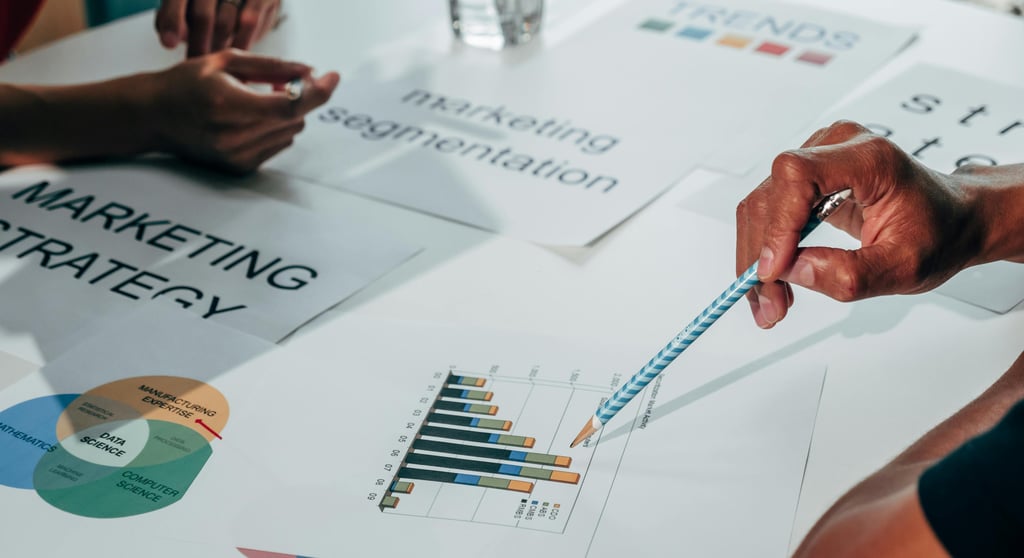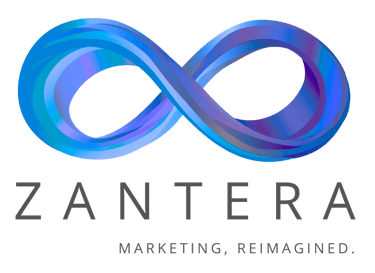The B2B Marketing Playbook: How to Build High-Intent Funnels That Convert


In today’s ever - evolving B2B landscape, the real challenge isn’t getting leads - it’s getting the right leads. In fact, 61% of B2B marketers admit their biggest challenge is generating high-quality leads that actually convert into revenue (www.hubspot.com).
The truth is: traditional funnels are often built to capture attention. But in modern B2B, attention means nothing without intent.
That’s why your funnel must evolve into a structured, data-led, intent-driven machine - guiding prospects seamlessly from interest to purchase with relevance, trust, and precision.
This blog is your complete playbook to build high-intent B2B funnels that don’t just attract traffic but convert that traffic
into real, recurring business.
Why Intent is the Future of B2B
According to a study by Gartner, B2B buyers spend only 17% of their purchase journey meeting with suppliers. The other 83% is spent researching independently - reading content, watching product videos, comparing vendors, and aligning internally with their team (www.gartner.com).
To add to the complexity, the average B2B buying decision now involves 6 to 10 stakeholders, each with different needs and objections.
What Separates a Lead from a High-Intent Lead
A lead might have downloaded a whitepaper.
A high-intent lead has visited your pricing page three times, registered for a demo, and reviewed your customer case studies.
According to Salesforce, high-intent leads:
Convert 2.3x faster
Contribute to 60%+ of closed revenue
Shorten the sales cycle by up to 40% (www.salesforce.com)
So if your funnel isn’t guiding intent early in the journey, you’ve already lost the sale.
Step-by-Step: How to Build a Funnel That Converts
1. Define a Sharp Ideal Customer Profile (ICP)
Intent starts with precision targeting move beyond basic industry or company size segmentation. Define triggers like:
Tech stack usage
Recent fundingProductized services examples
Job postings related to your solution
Active research signals
Use platforms like Bombora, Clearbit, or 6sense to access real-time intent data. Companies leveraging intent data see 3–4x better pipeline conversion (www.gartner.com/en/insights/sales/intent-data).
This allows you to build a funnel that engages prospects before they even land on your site.
2. Map Content to Funnel Stages Based on Buyer Intent
B2B buyers don’t want fluff - they want answers. That’s why your funnel content should align with buyer readiness.
At the Top of Funnel (TOFU) – Build awareness with blog articles, industry insights, and educational content.
At the Middle of Funnel (MOFU) – Offer comparison guides, webinars, and case studies to help buyers evaluate.
At the Bottom of Funnel (BOFU) – Give them demos, pricing, ROI calculators, and free trials to eliminate hesitation.
A study by Aberdeen Group found that personalizing content by funnel stage improves conversion rates by up to 72% (www.aberdeen.com).
3. Optimize Landing Pages for Speed, Clarity & Conversion
According to Unbounce, landing pages that focus on a single, clear CTA and remove distractions convert 220% better than those with scattered messaging (www.unbounce.com).
Make sure your B2B landing pages include:
A strong, benefit-driven headline
Clear value proposition
Trust boosters like testimonials or client logos
A short form (3–5 fields)
One, single-minded CTA
Your funnel is only as strong as your landing page experience
4. Use Behavioral Nurturing, Not Generic Email Flows
Leads don’t convert in one click. But nurturing them based on behavior, not just stages, increases deal velocity.
For example:
If someone downloads a whitepaper, follow up with a relevant case study in their industry.
If they visit the pricing page, enroll them in a retargeting ad campaign with client testimonials.
If they attend a webinar, offer a 1:1 consultation invite.
Marketo reports that behavior-based nurturing leads to 50% more sales-ready leads at 33% lower cost (www.business.adobe.com).
5. Align Sales and Marketing Around One Funnel
A disconnected sales-marketing handoff is one of the biggest killers of conversion. Shared goals, unified definitions, and real-time lead feedback loops are essential.
According to LinkedIn’s B2B Benchmark Study, companies with aligned sales and marketing teams see:
208% higher marketing-driven revenue
36% better customer retention
38% higher win rates (www.business.linkedin.com)
According to SiriusDecisions, B2B companies that actively track funnel velocity and leakage are 2.7x more likely to meet revenue goals (www.go.forrester.com/blogs/the-next-generation-demand-waterfall/).
Real Campaign Insight That Proved This Works
In one of my previous roles, I ran a performance-based campaign for a SaaS product targeted at mid-sized enterprises in the fintech space. Initial results showed excellent top-funnel performance—high impressions, low CPC, decent click-through rates.
But conversions were low. Demos weren’t happening. Pipeline was dry.
After auditing the funnel, we discovered the middle and bottom were completely misaligned with intent. We weren’t helping users take the next step—we were just educating them.
6. Measure the Metrics That Actually Matter
Stop focusing on vanity metrics like page views and email opens. Real funnel optimization comes from tracking business-impacting KPIs like:
According to LinkedIn’s B2B Benchmark Study, companies with aligned sales and marketing teams see:
Cost per Sales Qualified Lead (CPSQL)
Lead-to-Customer Conversion Rate
Pipeline Velocity (time to close)
Customer Acquisition Cost (CAC)
CAC Payback Period
Demo-to-Close Ratio
Use integrated CRMs like HubSpot or Salesforce to manage this alignment with real-time visibility across teams.
We made three strategic changes:
Introduced ROI calculators based on financial industry metrics
Replaced email drips with behavior-triggered flows
Launched LinkedIn retargeting using case study snippets and testimonial quotes
Result? In 45 days:
Sales-qualified leads increased by 38%
Demo-to-close rate improved from 14% to 31%
Revenue from campaign doubled by end of quarter
Lesson? A funnel built for clicks dies early. A funnel built for intent drives business
Conclusion: Intent-Driven Funnels Create Industry-Wide Wins
When you build marketing funnels that prioritize intent, you’re not just improving metrics-you’re improving how businesses grow and how buyers make decisions.
Buyers discover value faster.
Sales teams focus on leads that actually close.
Marketers finally get the credit they deserve for revenue contribution.
And businesses scale with clarity, predictability, and purpose.
High-intent funnels don’t just benefit your company they raise the standard across the entire B2B ecosystem. So whether you’re in SaaS, fintech, CRM, or martech now is the time to rethink your funnel.
Make it intelligent. Make it customer-first. Make it intent-led.
In today’s B2B game, intent isn’t just a metric it’s your competitive advantage.
#B2BMarketing #LeadGeneration #HighIntentMarketing #MarketingStrategy #B2BFunnels #DemandGeneration #RevenueMarketing #MarketingPlaybook #MarketingAutomation #PerformanceMarketing #SaaSMarketing #FintechMarketing #CRMSolutions #GrowthFunnels #MarketingLeadership #IntentData #DigitalGrowth #MarketingExecution #CustomerAcquisition #FunnelOptimization
👉 Book a free growth consultation
👉 Explore our success stories with service-based clients


Address:
WeWork Enam Sambhav, C – 20, G Block, Bandra Kurla Complex, Bandra East,
Mumbai – 400051
Phone:
+91 9987355665
Email:
Monday to Friday – 10 AM to 6 PM (IST)
Office Hours:
contact@zantera.io
Marketing isn't just about reach - it's about results
Zantera helps you cut through the noise with targeted, high-performing strategies across every platform. We power digital transformation for IT, Retail, Healthcare, Finance, and beyond.
Get ready to grow, scale, and lead.
Zantera™ © 2025. All Rights Reserved. | Privacy Policy | Terms | Cookie Policy
Strategically powered by Raed.
